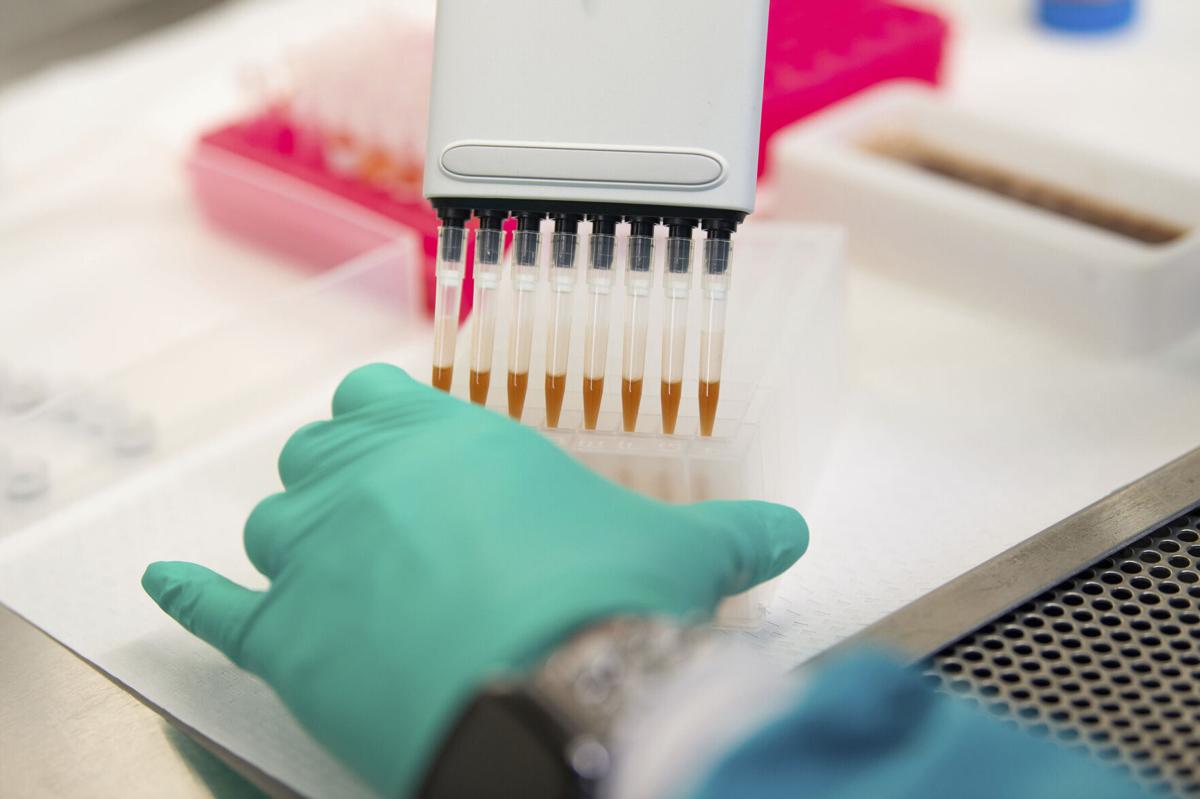While omicron has not been detected yet in Arizona, labs here are only testing a small portion of COVID-19 cases in the state’s counties for the variant.
Meanwhile, cases of the omicron variant were discovered in multiple states across the nation over the last week.
The omicron variant is of concern because it has certain mutations, and lots of them. We know about these mutations thanks to genomic sequencing.
This variant has a couple dozen mutations in the spike protein, especially in the part that can penetrate human cells, said Dr. David Engelthaler, director of the Translational Genomics Research Institute’s infectious disease research.
This seemingly allows the virus to invade cells faster and replicate faster, in a way that delta did, he said, adding that other mutations in this variant have been associated with the escape of antibodies, which erodes immune response.
“Now this is kind of like a supercharged version of delta, at least from the data we have so far,” he said. “It is still very early. This could change as more and more research happens over the next couple of weeks.”
Even though data on this variant has caused alarm around the globe, public health experts say not to panic yet because we don’t have enough information to properly assess this variant’s threat.
In a blog post last week, the interim director of the Arizona Department of Health Services, Don Herrington, said that the omicron variant hasn’t changed his advice to the public: Get vaccinated or get a booster if you’re eligible, mask up, physically distance, stay home if you are sick and get tested if you have been exposed.
Nearly 63% of Arizona’s total population have received at least one dose of a COVID-19 vaccine, according to ADHS, as of Friday.
In Pima County, nearly 72% of the total population has received at least one dose of vaccine, according to the CDC, as of Friday.
About 19% of children 5 to 11 years old in Pima County have been vaccinated, as of Nov. 30, according to the county health department.
It’s possible that the omicron variant is already here and officials just haven’t detected it yet, due to the low percentage of cases that have been sequenced.
“I definitely think it’s possible that the omicron variant could be in Arizona just like a lot of other places in the country,” said Jessica Rigler, the state health department’s assistant director for public health preparedness. “You’re almost looking for a needle in a haystack in the beginning and then a variant becomes dominant. That’s when you’re going to see it more routinely popping up in the samples.”
Even if the omicron variant inevitably becomes dominate in Arizona, it’s still important to sequence samples from COVID-19 cases to learn as much about them as possible, Rigler said.
“We can do follow up with those cases to learn those things that we don’t know yet. Like how effective the vaccine or therapeutics are, how severe omicron cases are, how transmissible they are,” she said. “All of those questions can’t be answered until you have the sequencing data available to identify cases of that particular variant.”
Genomic sequencing has lagged behind the spread of omicron cases across the entire world. For example, the omicron variant had already spread to multiple countries by the time it was discovered.
Researchers in Europe said that omicron cases had already arrived there by the time the first cases were detected in South Africa.
Over the past three months less than 3% of countywide samples from positive PCR tests have been sequenced, according TGen’s sequencing dashboard.
Dr. Theresa Cullen, the director of Pima County’s health department, would like to see this number between 8% to 15%, she said, adding that she does think it will increase in the near future.
“In my discussions with TGen over (last) weekend, they had a backlog of PCR positive samples that needed to get sequenced,” Cullen said, adding that this isn’t necessarily a bad thing because TGen is prioritizing new samples that have a higher chance of detecting the omicron variant.
Pima County collaborates with the state health department and the CDC to determine how many samples get sequenced, but ultimately the county does not decide how cases get sequenced, Cullen said.
The state health department works with local public heath departments and the laboratories to determine how many samples to sequence.
“There’s not a specific number or threshold of specimens to be sequenced. We look for representation,” Rigler said. “I don’t have a specific goal in mind. The goals of sequencing, in general, are to make sure that we’re aware of what the dominant circulating strains are and can detect new variants.”
Most sequencing in Arizona is done by TGen, the Centers for Disease Control and Prevention and Arizona State University. Funding for sequencing across the state largely comes from ADHS and the CDC.
The state health department has federal grant funding to use for genomic sequencing. Of the $17,810,000 allocated for sequencing, it has spent $4,619,735, according to Steve Elliott, a spokesman for ADHS.
“I would remind people, right now 99% of what we’re seeing in the county is delta. The vaccination series and the boosters are highly effective against the delta variant,” Cullen said. “We also have little insight right now into whether there will be decreased efficacy with the current vaccine against omicron. And given that we don’t know, I don’t think that now is the time to be hesitant. Now is the time to get your booster or get vaccinated fully.”
As of Saturday, no omicron cases had been detected in Arizona.





